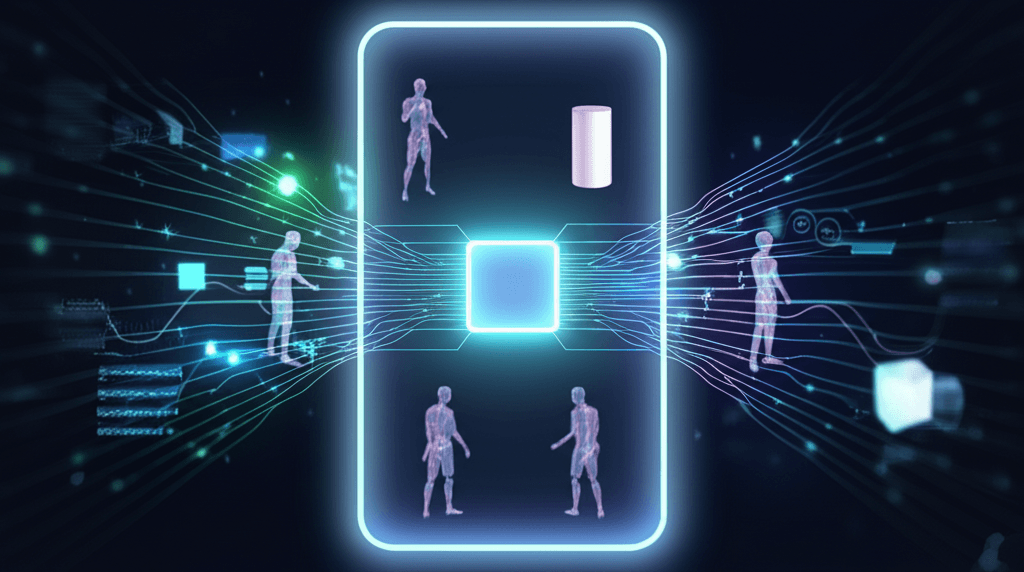TikTok Revolutionizes Ads: New AI Tools Simplify Video Production
How TikTok's advanced AI tools are automating video ad creation, lowering barriers, and reshaping digital marketing.
June 16, 2025

TikTok is significantly expanding its suite of artificial intelligence tools for advertisers, rolling out a new set of features designed to automate and simplify the creation of video ads on its platform.[1][2][3] The latest additions to its Symphony AI suite, including text-to-video and image-to-video generators, aim to lower the barrier to entry for businesses of all sizes, allowing them to produce content tailored for the app with minimal effort and resources.[1][2][4][5] This move signals a broader industry trend towards AI-driven content creation and represents a strategic pivot for TikTok as it competes for advertising revenue in an increasingly crowded digital landscape.[6]
The newly unveiled tools are part of the Symphony Creative Studio, an AI-powered hub that helps marketers generate and remix videos, create scripts, and even produce content featuring digital avatars.[7][8][9] With the image-to-video feature, advertisers can upload static product photos or other brand assets and, with a short text prompt, the system will generate five-second, TikTok-style clips.[4] Similarly, the text-to-video tool allows marketers to generate video content from a simple written description.[2][4] These features are intended to streamline the creative process, enabling brands to quickly develop multiple ad variations and bring entire product catalogs to life in a video format native to the platform.[4] Research indicates that ads created specifically for TikTok increase purchase intent by 37% and brand favorability by 38%, underscoring the value of platform-specific content.[2]
A central component of TikTok's AI advertising strategy is the use of digital avatars. The platform offers two types: "stock" avatars, which are pre-built using paid actors and licensed for commercial use, and "custom" avatars, which can be crafted to represent a creator or a brand's spokesperson.[10][11][12] These avatars can narrate scripts in over 30 languages, perform gestures, and be placed in various virtual settings, offering a scalable way to personalize campaigns and reach global audiences.[8][13][9] The "Showcase Products" feature further enhances this by allowing avatars to hold or wear products being advertised.[1] To address ethical concerns and maintain transparency, all AI-generated content, including videos featuring avatars, will be clearly labeled as such.[8][10] The custom avatar creation process also requires explicit consent from the individual being represented.[9]
The push into AI-powered ad creation is a direct response to the evolving demands of the digital advertising market. Brands, particularly small and medium-sized businesses, are constantly seeking more cost-effective and efficient ways to produce the high volume of content needed to stay relevant on platforms like TikTok.[2][6] By automating much of the production process, TikTok aims to help these businesses stretch their advertising budgets and invest more heavily in campaigns.[2] This strategy places TikTok in direct competition with other tech giants like Meta, which has also been heavily investing in generative AI for advertising and reportedly plans to automate all ad creation by 2026.[1][14] The announcement of these new tools at events like the Cannes Lions advertising festival highlights the growing importance of AI in the battle for advertising dollars.[2][6]
While the promise of streamlined, cost-effective ad creation is compelling for many marketers, the rise of AI-generated content also brings potential challenges. The quality and authenticity of fully automated ads remain a concern, as does the potential for the technology to displace human creative professionals. Some early examples of the AI avatars have been described as slightly unnatural or "creepy," with jerky movements and unnerving eyes, highlighting the current limitations of the technology.[12] Despite these hurdles, the industry trend is clear. As AI models for generating video, text, and audio become more sophisticated and widely available, the landscape of digital advertising is set to fundamentally change.[1] TikTok's investment in the Symphony suite demonstrates its commitment to being at the forefront of this transformation, aiming to become not just a social media platform, but an indispensable business partner for brands seeking to thrive in the creator economy.[2][15] The platform is also integrating its tools with partners like Adobe and WPP to embed TikTok-first strategies directly into established marketing workflows.[4]